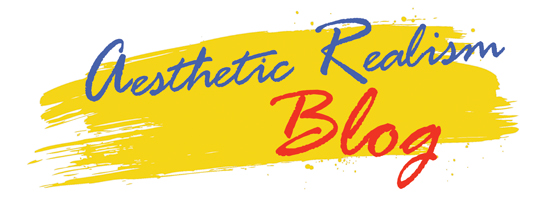
Michael Palmer, Aesthetic Realism associate, writes: In his 1953 essay “Art as, Yes, Humility,” Eli Siegel explains something that people have ached to know: how to be genuinely proud of our lives. I once felt that to be proud, I had to impress people with a prestigious job in which I made a lot of… Read more
Jeffrey Carduner, Aesthetic Realism consultant, writes: Reading “Keats, Beauty, & Ourselves,” you’ll be thrilled as you learn the meaning of one of the great poems of the world, and what that poem has to do with our own lives in the 21st century. There is, here, a magnificent understanding of love, of what interferes with… Read more
Harvey Spears, photographer and Aesthetic Realism associate, writes about this article by John Stern, published in The Municipal Engineers Journal: What can we learn about ourselves from one of the most historic buildings in NYC? In his article “Grand Central Terminal: A Study in Beauty and Meaning,” John Stern, Tri-State Regional Planner (ret.) and Aesthetic… Read more
Steven Weiner, Computer Specialist and Aesthetic Realism associate, writes: “Beauty Always & Right Now” is about something that art critics and others have tried for centuries to understand, and which Aesthetic Realism, the philosophy founded by Eli Siegel, explains: what art is—what every instance of real art has in common. And you’ll see: Aesthetic Realism also… Read more
Marion Fennell, singer with the Aesthetic Realism Theatre Company, writes: I think this article by artist and Aesthetic Realism consultant Marcia Rackow is wonderful. In it, she writes about the great 20th-century sculptor Alexander Calder and the surprising and thrilling way heaviness and lightness are present in his work. She shows vividly not only why… Read more
Jeffrey Carduner, Aesthetic Realism consultant, writes: People have loved works of art, and have returned to look at paintings again and again. But they haven’t known that all art is about themselves too, their own lives. And people haven’t seen that what makes for the beauty in art is ethical: that art has answers to the most… Read more
Nancy Huntting, Aesthetic Realism consultant, writes: How can we see the world—all that’s outside us—more truly? How can we see ourselves more sensibly? Is beauty, the beauty of art, a guide for pride and happiness in a human being?—and in a nation? The good news is: there are answers to these questions. And that news is… Read more
Derek Mali, Aesthetic Realism consultant and actor, writes: When I first read Eli Siegel’s essay “The Ordinary Doom,” I was astounded—I felt, “This describes me!” Though I hadn’t met him, I felt he wrote the essay with me in mind. In it, Mr. Siegel explains the loneliness people take for granted—that they walk around with… Read more
Steven Weiner, Computer Specialist and Aesthetic Realism associate, writes: Central to the education of Aesthetic Realism is the asking: Why is art, and the comprehension of what beauty is, an urgent study for the happiness of our lives, and for the well-being of the world? This new issue of The Right Of answers that question logically, culturally,… Read more
Jeffrey Carduner, Aesthetic Realism consultant, writes: The human self in all its mystery–who are we? what are we going for?: that’s what “The Self—Always and Now” is about. In it there is such a surprising, exciting looking at what and who a person is, with our depth and complexity, and our emotions, both good and… Read more
- « Previous Page
- 1
- …
- 11
- 12
- 13
- 14
- 15
- …
- 46
- Next Page »






